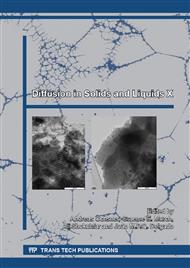p.1
p.5
p.11
p.17
p.24
p.30
p.36
p.42
Analysis of Freeze-Drying and Rehydration of Açai (Euterpe oleracea Martius)
Abstract:
The freeze-drying rate is essentially low, since it is controlled by internal moisture diffusion. In addition, the application of vacuum and low temperature during the process presents a higher energy demand. Therefore, the search for new strategies to improve water mobility during freeze-drying constitutes a topic of relevant research. The aim of this work was to evaluate the use of power ultrasound to improve freeze-drying characteristics of açai, quantifying the influence of the applied power on both the drying and rehydration kinetics of the material. Açai (Euterpe oleracea Martius) samples were sonicated with two different frequency levels, 20 kHz and 40 kHz, and two sonication times, 3 min and 10 min. Page’s equation considering internal and external resistances to mass transfer provided a good fit of freeze-drying kinetics, while the Peleg’s equation was found to be suitable for describing the rehydration kinetics of freeze-dried açai. Pretreatment of açai with ultrasound waves was not effective. Ultrasound-induced structural disruption in the açai skin hindered the mass transfer during both freeze-drying and rehydration processes.
Info:
Periodical:
Pages:
11-16
Citation:
Online since:
July 2015
Authors:
Keywords:
Price:
Сopyright:
© 2015 Trans Tech Publications Ltd. All Rights Reserved
Share:
Citation:


